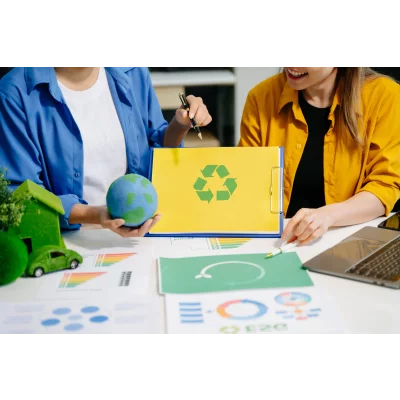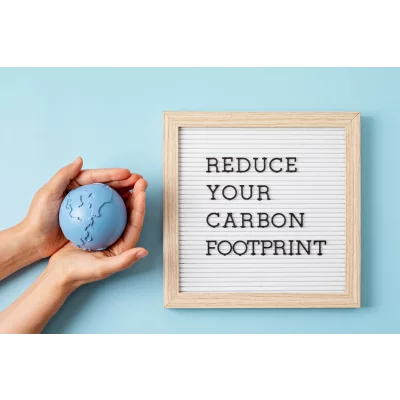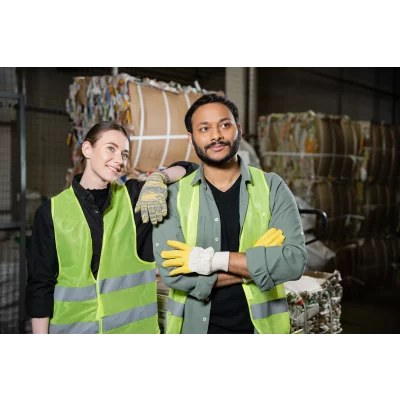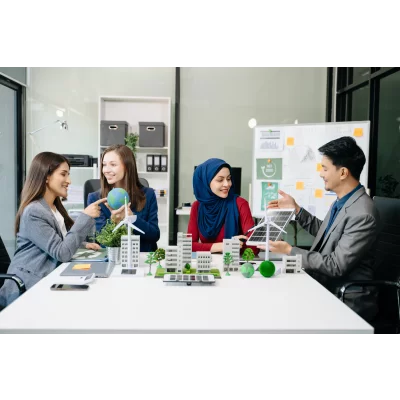Circular Economy in Practice
Description: The presentation "Circular Economy in Practice" explores two real-world examples of circular economy principles:
1. Composting – Demonstrates sustainable organic waste management through compost production, which enriches soil with essential nutrients, improves water retention, and supports microbial life for healthier plant growth.
2. Biochar and Terra Preta – Highlights how biochar, produced through pyrolysis, boosts soil fertility by acting as a “coral reef” for microbes and nutrients. It enhances long-term nutrient storage and soil structure.
The presentation emphasizes regenerative soil practices, nutrient-dense food production, and innovative approaches to sustainability in agriculture.
Developed under project
: REUSE
How to Calculate the Carbon Footprint of an Organization and a Product
Description: The session explained how to calculate the carbon footprint of both organizations and products, highlighting its importance for compliance, cost savings, and competitive edge. Key standards like the GHG Protocol and ISO 14064, 14067, and 14068 were introduced, along with the distinction between organizational and product footprints and the three emission scopes (1, 2, and 3). A 5-step method—goal setting, data collection, applying emission factors, calculation, and interpretation—was presented, stressing accurate data, supplier collaboration, and digital tools. The session showed how carbon footprinting can shift from a regulatory task to a business benefit and addressed challenges like Scope 3 complexity, data gaps, and greenwashing with practical solutions such as KPIs, new technologies, and circular design.
Developed under project: REUSE
How to Develop a Waste Management Plan and Practical Guidelines for Waste Management in Industry
Description: The session emphasized the importance of a solid waste management plan as a key part of a company’s sustainability strategy. It introduced a waste hierarchy—prevention, reduction, reuse, recycling, energy recovery, and disposal—and a practical 10-step approach from waste inventory to continuous monitoring. Key points included circular economy principles, new technologies (AI, smart sensors, chemical recycling), and relevant EU, Austrian, and Slovenian legislation. Extended producer responsibility and recycling targets were shown to drive closed-loop systems. Case studies from companies like Unilever, IKEA, and Henkel illustrated how “zero waste” is achievable, leading to cost savings, resource recovery, and enhanced market trust. The session provided a roadmap for turning waste into a competitive advantage.
Developed under project: REUSE
Sustainable Development, ESG Regulations and Reporting Frameworks in Organizational Practice
Description: The session gave mentors a clear overview of sustainable development and the ESG framework, emphasizing the importance of balancing Environmental, Social, and Governance pillars for long-term growth. Examples from sectors like energy, finance, tech, automotive, and retail/FMCG showed how companies can reduce their footprint, enhance social impact, and improve governance. New EU regulations (CSRD, EU Taxonomy, SFDR) were highlighted for expanding reporting requirements and combating greenwashing. Common ESG reporting mistakes—like incomplete data and misleading claims—were addressed with practical solutions, including KPI selection, integrated data systems, employee training, and audits. The session offered a roadmap for turning ESG from a regulatory task into a strategic advantage, improving financing access, investor interest, customer trust, and risk management.
Developed under project: REUSE













